How To Set Valve Clearance On Briggs And Stratton
How do I troubleshoot & repair common pocket-size engine bug?
Having engine bug? Use this comprehensive guide when troubleshooting issues with your lawn mower, snow blower or other outdoor power products - whether your product won't start, is stalling, surging or running crude.
Backyard Mower / Equipment Engine Won't Start
Pocket-sized Engine Runs Poorly
Maintenance & Repair Schedule
![]() Alarm: Always read the engine and equipment manual(south) before starting, operating, or servicing your engine or equipment to avoid personal injury or property damage. See an authorized dealer or contact Briggs & Stratton if you lot are unsure of any procedure or have boosted questions. Find all Engine Safety Warnings
Alarm: Always read the engine and equipment manual(south) before starting, operating, or servicing your engine or equipment to avoid personal injury or property damage. See an authorized dealer or contact Briggs & Stratton if you lot are unsure of any procedure or have boosted questions. Find all Engine Safety Warnings
Lawn Mower / Equipment Engine Won't Start
Engine starting problems have a few mutual causes, peculiarly if you lot're using your lawn mower or outdoor power production after it's been stored for the winter or off-season.
Safe Tip: ALWAYS remove / disconnect the spark plug before performing engine repair.
Stride 1: Check Your Fuel
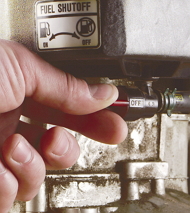
Do you have fresh, make clean fuel in the tank? If it's empty, fill it up and go! If it's full, check that the fuel shut-off valve is open up and that information technology is clean.
Stale fuel, dirt and debris are the near common crusade of outdoor ability equipment not starting properly. If you lot store equipment with untreated gas in the tank, information technology can lead to engine harm.
Prevent this trouble in accelerate through proper lawn mower & outdoor power equipment storage. Using fuel stabilizer volition keep your gas from creating small engine bug.
Step 2: Clean the Carburetor
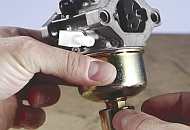
Carburetor Problems Crusade Mower Engines Not To StartThe carburetor regulates how air and fuel move through the engine to power your equipment. If it is muddied, that tin can cause poor engine functioning or starting problems.
>> Follow these steps for cleaning carburetors
>> Follow these steps for carburetor rebuild
Step iii: Cheque the Spark Plug & Possible Ignition Issues
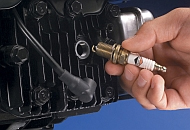
Disconnected, dirty or fouled spark plugs are common causes for engines that won't showtime. Spark plugs typically demand to be replaced every season or 25 hours of use. You should also cheque that the spark plug gap is fix properly.
>> Follow this guide on checking and replacing spark plugs
If your spark plugs look good, problems with your ignition organization tin besides preventing a spark. These can range from a faulty spark plug lead, shorted kill switch or flywheel fundamental damage.
To exam and fix, cheque out our Small Engine Ignition Systems FAQ or achieve out to your local Briggs & Stratton dealer for avant-garde repair help.
Step iv: Cheque the Valves & Compression System
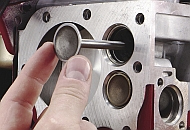
Air-fuel compression is crucial to engines powering lawn mowers and outdoor power equipment. The compressions system is made up of valves, piston, cylinders and rings that control how the air and fuel vapors move through the engine. Valves let air in (the intake valve) and out (the exhaust valve), pistons move back and along pushing the air-fuel mixture to the ignition system and the piston rings keep it all sealed up tight.
If at that place isn't proper valve clearance or in that location's a leak, this can cause compression problems that keep an engine from starting. Yous tin can perform a compression system with a leak downward tester. If you don't accept one of these, we recommend visiting your Briggs & Stratton repair dealer to perform the exam and cheque that these components are in good shape.
Small Engine Runs Poorly
Use this simple Q&A format list to troubleshoot pocket-size engine bug you may experience with your backyard mower, snow blower or other power equipment.
Engine Stalling, Surging or Running Rough
When your engine starts and stalls, it is oft due to standard maintenance problems. Prevent stalling problems before they offset with a tune-up kit. Encounter "Why My Engine Won't Commencement" section above or use the Q&A guide below.
Is your fuel fresh?
Stale, untreated gas begins to suspension downwardly after about a month. Drain the gas from your backyard mower our outdoor power equipment, then replace with fresh gas and fuel stabilizer to extend the life of your fuel.
Is the air filter dirty / plugged?
Clean or replace the air filter.
Is the spark plug fouled?
Clean spark plugs where applicable (Follow instructions for checking and changing spark plugs).
Is your oil fresh?
Check your oil level and appearance every fourth dimension you lot apply your engine while it is common cold. Your oil needs to exist inverse every 25 hours of use or season. (See Checking and Irresolute Mower Oil)
Engines Smoking
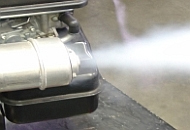
Is the engine emitting white / blueish fume?
This means your engine burning oil. (see Engine emits white/blue smoke while running).
Is the engine emitting black smoke?
Yous need to perform a Carburetor Adjustment.
Is the air filter dirty / plugged?
Clean or replace the air filter.
Engine Overheating
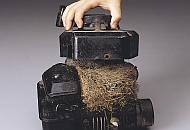
Is the engine dirty?
Follow instructions for safely cleaning & removing debris from pocket-sized engines.
Is the oil level low?
Add oil to the engine. NOTE: Never add oil to the gasoline for a four-stroke engine (meet Checking & Changing Oil).
Are any shrouds or cooling fins missing or broken?
Install new parts as needed. Reference your repair manual, available for buy.
Is the fuel mixture too lean?
You can make up one's mind if your air-fuel mixture is off by checking the country of your carburetor. Use this Carburetor Adjustment FAQ equally a guide.
Is there a leaky gasket?
This is another mutual carburetor problem associated with overheating engines. Larn how to check and replace the gasket (see Backyard Mower Carburetor Rebuild FAQ).
Is the fuel tank vent or fuel tank screen plugged?
Clean the fuel tank vent and screen.
Engine Knocking
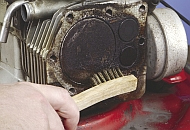
Does the combustion chamber incorporate excess carbon?
Carbon deposits can form on your combustion chamber. If you see any, merely clean carbon from the piston and caput (see Removing Engine Carbon Deposits).
Is the flywheel loose?
Inspect the flywheel and central; replace as needed (run across Inspecting the Flywheel & Central).
Is the spark plug pb faulty?
Exam the lead with a spark tester, and so test the engine (run into Servicing Spark Plugs).
Spark Plug Fails When In Use
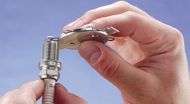
Is the spark plug fouled?
Clean spark plugs where applicable (Follow instructions for checking & changing spark plugs).
Is the spark plug faulty or gap incorrect?
Replace the spark plug or conform the spark plug gap (see Spark Plug Gap FAQ).
Are the breaker points faulty?
Check the ignition systems' breaker points. If they are faulty, install a solid-land ignition (come across Troubleshooting Ignition Problems).
Are your carburetor settings correct?
Check your small engine's carburetor settings. Find the proper carburetor settings and footstep-by-step directions for Carburetor Adjustment.
Is the valve spring weak?
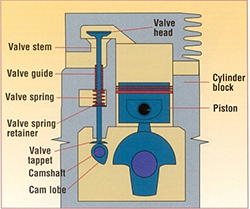
Cheque that the valve spring still has tension.
To access this, you'll have to remove the muffler, crankcase and other components blocking the valve chamber. Then, remove the cylinder caput bolts (characterization for easy re-installation)
Adjust the jaws of the valve leap compressor until they impact the top and bottom of the valve chamber
Button the tool in to compress the leap and tighten the jaws
Remove the retainers and lift out the valves , compressors and springs
If you notice weak springs, replace them based on your pocket-sized engine'due south specifications. These can exist plant in your operator's manual.
Is the valve clearance set incorrectly?
If your valve bound is still working well, check the clearance. Valves that stick or have leaks tin can cause an engine to stop running. Accommodate the valve clearance to recommended settings (see your operator's manual).
How To Set Valve Clearance On Briggs And Stratton,
Source: https://www.briggsandstratton.com/eu/en_gb/support/faqs/browse/engine-problem-solving-tips.html
Posted by: williamshaind2001.blogspot.com


0 Response to "How To Set Valve Clearance On Briggs And Stratton"
Post a Comment